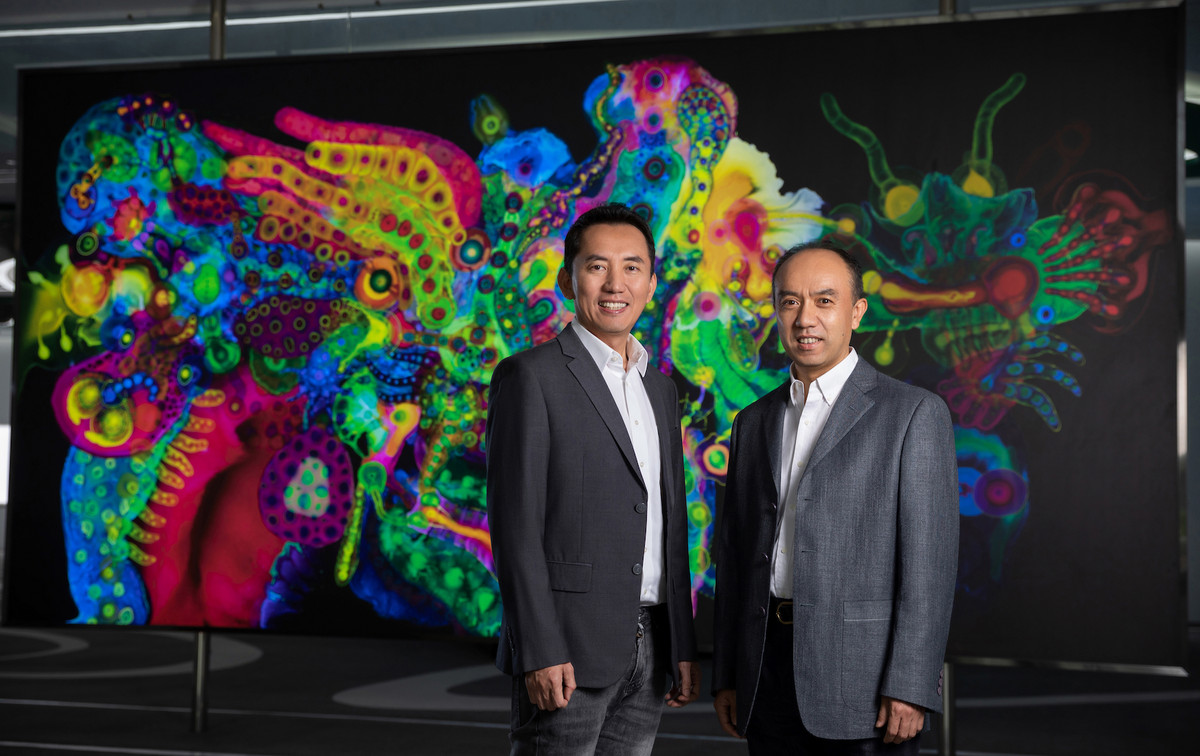AI-powered Cryo-EM Attracts Big Bucks And Promises To Disrupt Structural Biology
Shuimu BioSciences, a biotech start-up working towards the implementation of cryo-EM into drug discovery, got an investment from the internet tech giant ByteDance last October. Shuimu uses not only cutting-edge cryo-EM technology, but also combines it with machine learning for the optimized 3D atomic modeling and more. Shuimu claims to rationalize the drug discovery applying their cryo-EM technology, getting the resolution of 1.8 Å for some protein targets.
Cryogenic electron microscopy (cryo-EM) is a set of three related techniques, which are united by the same principle of imaging at extremely low temperatures to “freeze and fix” the molecules at the stable position. Over the recent years single particle cryo-EM has gained a particular interest of structural biologists and became the focus of some biotech start-ups.
The mechanism of cryo-EM is based on the flash-freezing solutions of proteins and other biomolecules forming the vitreous ice, followed by bombarding with electrons and then computational processing of data. Unlike conventional electron microscopy, cryo-EM skips the steps of chemical fixation, dehydration and staining, preserving the native hydrated state of the molecules. This marks one of the main advantages of cryo-EM over alternative methods: there is no need in crystallization, hence it resolves the issue of crystallization-resistant molecules, such as membrane proteins.
Aside from the crystallization-free imaging, cryo-EM sparkles with the opportunity to capture the molecules in the near-native states. It was questioned decades ago and is still not proven whether cryo-EM can create the fully representative “snapshot” of the physiological processes, meaning the imaging of the molecular processes the way they occur in the living cell. The trick lies in the cooling process: even though the sample is cryo-cooled extremely fast, some thermodynamic processes can “freeze out” non-simultaneously with others. In any case, cryo-EM was already shown to capture multiple conformational states, impossible to capture with other methods, heating up the interest of structural biologists and investors.
By now X-ray crystallography has been serving the structural biology field for more than a century, and still remains as one of the abundantly used methods. It is cheaper and can provide the higher-resolution information compared to cryo-EM, but cannot reveal some conformational near-native details for biomolecules. These two methods satisfy different research needs, rather than being directly competing, but it is highly probable that within the next few years the number of protein structures determined by cryo-EM will surpass the corresponding X-ray crystallography numbers.
Recently, the rapid advancements in cryo-EM, coupled with AI technologies, gave birth to an entirely new species of biotech startups such as Gandeeva Therapeutics, Septerna, and MOMA Therapeutics. Shuimu partnered with Thermo Fisher in 2019 to build the first commercial cryo-EM facility in the Asia Pacific with two Titan Krios. It has quickly become the largest in the world as it is expanding its capacity to eight 300kV cryo-EMs this year.
Shuimu’s drug discovery platform takes advantage of its high-throughput cryo-EM facility and AI. It applies artificial intelligence and deep learning algorithms to automate data collection and model building workflow. An atomic model can be built in only one or two days, instead of two weeks, as the company claims. Shuimu is accelerating drug discovery with its data set of biological structures, including structures of proteins, antibodies, nucleic acid, and other compounds.
Shuimu BioSciences is led by Dr. Hongwei Wang and Allen Chunlong Guo. As one of the top cryo-EM methodologists, Dr. Wang has contributed many technological innovations to this field. His team once achieved the structure reconstruction of 52 kDa streptavidin at near-atomic resolution, which is considered to be a very small protein size to be solved by cryo-EM. In another article published last month, Dr. Wang and his collaborators, revealed the molecular mechanism for the full cycle of ATP-dependent double-stranded RNA processing. This structural insight into RNA biology may help find new targets for drug discovery, along with more data about membrane proteins structure — also one of the main focuses of cryo-EM.
"In the future, all drug development will take advantage of cryo-EM and AI," said Allen Guo, CoFounder, and CEO at Shuimu.

Shuimu BioSciences cofounders: CEO, Allen Chunlong Guo (left) and Chair of Scientific Advisory Board, Dr. Hongwei Wang (right). Photo Credit: Shuimu BioSciences
The cryo-EM field is “heating up” with biotech start-ups attracting the attention of a wide range of investors, from the smaller venture organizations to the owner of TikTok and internet tech giant ByteDance, investing into Shuimu BioSciences. The interest is driven not only by the revolutionary Nobel prize winning technology, but also by the active recruitment of AI into the process. The recent publication “An AI-assisted cryo-EM pipeline for structural studies of cellular extracts” highlighted the non-replaceable role of AI in the complex cryo-EM pipelines, including AI-driven atomic model prediction to rapidly and simultaneously investigate the structure of multiple protein community members de novo. Machine learning helps to not only speed up and optimize the cryo-EM pipeline, but to also avoid the user bias pitfalls.
Gandeeva Therapeutics, founded only in 2021, raised $40M at the beginning of this year to develop novel therapies based on the precision imaging of protein-drug interactions. Their Target-Selection Engine together with the Cryo-EM Engine can help to “steer away from discovery dead ends”, as the company stated. At the same time, launched in 2020 cryo-EM biotech Moma Therapeutics raised its funding to $236M total this spring, having an ambitious goal of releasing to clinic novel precision drugs for cancer.
All in all, the cryo-EM industry will continue expanding and revealing not only the answers to deep scientific questions, but also the solutions for previously undruggable targets. Cryo-EM exploring the near-physiological biomolecules states, powered with AI for the process automation and data processing, is a multifunctional tool for drug discovery, the work of which will shine during the next years.
Topic: AI in Bio